The Parallels between Putin and Trump Are Ominous
But the differences between Russian and American society and traditions also matter.
On February 6, 2017, I published an op-ed in the Washington Post called “We can’t let Trump go down Putin’s path.” Writing just a few weeks after President Trump’s first inauguration, I drew parallels in that article between Putin’s ideology and his steps toward consolidating dictatorship in Russia, and Trump’s worldview and potential actions that could undermine democratic institutions in the United States. As I optimistically predicted in 2017, Trump’s first term did not destroy American democracy because,
“Thankfully, this historic analogy is not precise. American democratic institutions — including Congress, the courts, the opposition party, state-level governments, the media, and civil society — are much more robust today than similar Russian institutions were in 2000. And as demonstrated already in the Trump era, when millions across the nation protested against Trump in general and then, a few days later, thousands protested against his ill-advised migrant travel ban, American society is far more willing and capable to mobilize to defend democracy than Russian society was in 2000.”
Most importantly, four years after I published that op-ed, American voters had the opportunity to participate in a free and fair election in 2020, and they voted Trump out of office. In true authoritarian form, Trump tried to disrupt the peaceful transfer of power after that election, culminating in the insurrection he inspired at the Capitol on January 6, 2021. Trump failed, and American democratic institutions succeeded. After winning a relatively free and fair election in 2000, Putin never offered Russian voters such an opportunity (together with Harvard professor Tim Colton, I wrote a whole book about that election; check it out here). That was a significant difference between Putin’s Russia and Trump’s America four years ago.

Today, Trump is back. He won a free and fair election in 2024 and has now leveraged his electoral mandate to attack American democratic institutions even more aggressively. Tragically, the parallels between Putin’s early years of eroding democracy in Russia and Trump’s current actions are even greater than in 2017.
First, Trump and Putin champion very similar worldviews. At least rhetorically (who knows what they actually believe behind closed doors), they are both illiberal nationalists. They lambast liberal ideas as having denigrated their respective societies. They champion their version of orthodox, conservative values. Both also use ethnic and racist framings of us versus them. Both are anti-immigrant and seek to preserve the alleged purity of their nations. Trump also admires Putin, thinks he is a “strong” leader, and is not concerned about his autocratic or imperial ways. In international affairs, both are militant unilateralists with little interest in multilateralism. Their respective ideologues—such as Steve Bannon in the United States and Alexander Dugin in Russia—admire each other. And Putinism and MAGA-ism are part of a larger transnational movement of illiberal nationalism that has supporters worldwide, including some even in power in Europe.
Relatedly, Trump and Putin both frame the political struggle as one between elites and the people, even though, paradoxically, Trump is a billionaire and Putin may be the wealthiest person in the world. As I wrote in 2017,
“To counter the urban, educated, wealthy ‘creative class’ protesting against him, Putin also mobilized his electoral base: the rural, poor, uneducated supporters who were the primary losers of Russia’s (partial) integration into the global market economy. Putin and his administration took deliberate actions to polarize Russian society, pitting citizens from big cities such as Moscow and St. Petersburg against ‘real’ Russians in the rural heartland.”
Sounds familiar? That’s exactly Trump’s playbook right now, dividing our society into the bad Americans in blue states and the good Americans in red states. As Trump’s Secretary of Homeland Security, Kristi Noem recently said about their administration’s police actions in Los Angeles, “We are not going away,” she warned. “We are staying here to liberate the city from the socialists.” The deeper electoral and cultural divides are actually between cities and rural areas, rather than between red and blue states. Big cities in my home state of Montana are blue, and rural counties in California are red. (For the details, read Jonathan Rodden’s book, Why Cities Lose: The Deep Roots of the Urban-Rural Political Divide.) Trump’s attacks on California elected officials right now follow this pattern.
Another parallel is their courtship of wealthy people. To win over the Russian oligarchs when he first came to power, Putin enacted a 13 percent flat tax on individual incomes and dramatically reduced corporate taxes. Not surprisingly, Russia’s richest supported him. Sounds familiar again? Over time, however, Putin had a falling out with some of these oligarchs who refused to play by his rules. In 2003, Putin even arrested Russia’s richest person, Mikhail Khodorkovsky, whom he kept in prison for ten years. Trump seems to be going through a similar cycle with America’s plutocrats. When Trump was reelected, many (though not all – read Reid Hoffman here) of America’s wealthiest praised Trump with great enthusiasm. And no one supported and celebrated Trump more than our richest citizen, Elon Musk. The Trump-Musk bromance is now over, even if Musk now seems to have some regret about his harshest criticisms of the president. Just as happened in Russia over time, some American businesspeople have already realized—and others will eventually come to understand—that Trump’s autocratic and erratic ways are not conducive to economic growth.
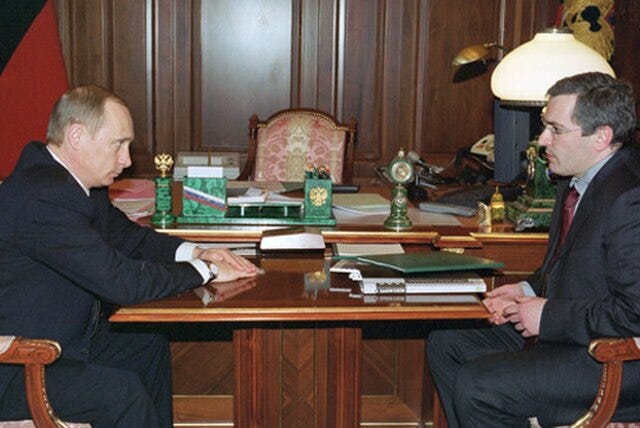
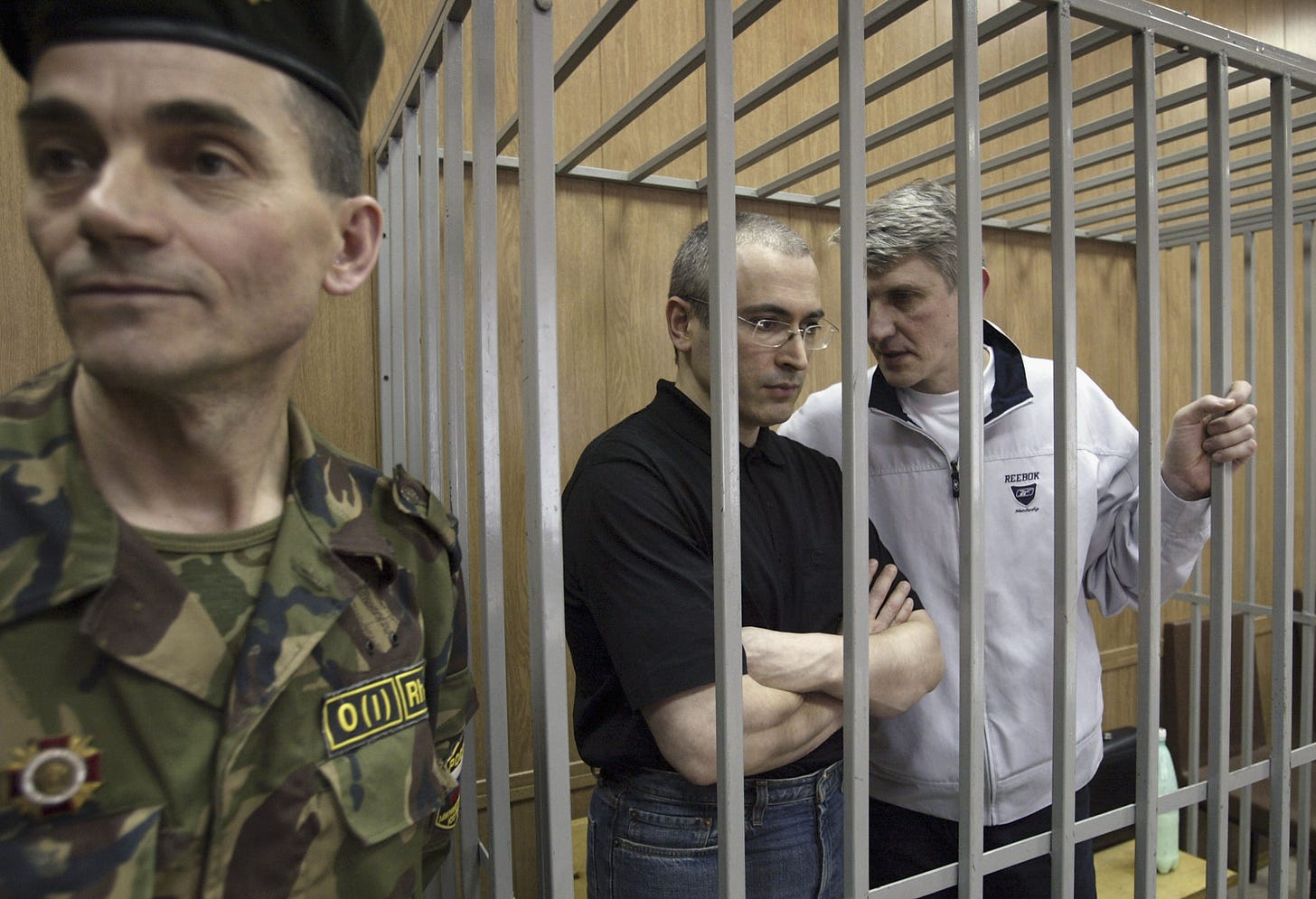
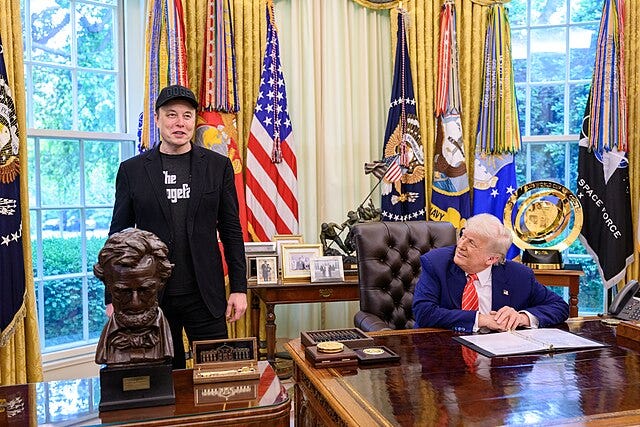
When Putin was first elected in 2000, I wrote that “he promised to make Russia great again. To do so, he pledged to end the economic collapse, political chaos, and lawlessness—the 'carnage,' if you will—of the 1990s.” Trump has promised the same. Putin back then and Trump today focused on “restoring sovereignty,” “strengthening our borders,” and thwarting foreigners from fomenting unrest and revolution. In 2000, Putin was focused on liberating Chechnya from rebel forces. Trump today is saying the same thing about California. Putin also ordered raids throughout the country to arrest and deport alleged illegal immigrants. As my 2017 op-ed outlines, “In Moscow and other large Russian cities, security forces rounded up and deported Chechens and other Muslim-minority immigrants from Central Asia and the Caucasus who allegedly looked like Chechen terrorists.” Sounds familiar?
More generally, early Putin and Trump today both claim to be restoring “law and order.” Putin’s primary instrument of power for pushing his autocratic agenda was the presidential decree. Trump is now using the same tool. As I wrote in 2017, “Putin also moved quickly against another declared enemy of the state: the independent press.” Trump has the same view of independent media.
Moreover, Putin loved to amplify the symbols of manliness and power. His image makers deliberately cultivated this imagery, showing Putin riding horses and fishing shirtless, doing martial arts, filming the Russian leader attending boxing matches, hanging out with Steven Segal and other movie action heroes, and vastly expanding the pageantry and size of the military parade to celebrate the victory in the Great Patriotic War. Trump has not yet been photographed shirtless in any activity. Still, he also attends fighting events, hangs around tough guys, and is about to preside over his own military parade on his birthday. Seeing those tanks roll into Washington reminds me so much of Putin’s Russia and also the Soviet Union. As the U.S. Ambassador to Russia, I was obligated to attend those parades, but they never gave me a good feeling. The parade scheduled for Saturday will not give me a good feeling either. There are better and less expensive ways to celebrate the 250th anniversary of the U.S. Army.
With time, Putin became more aggressive in challenging the constitutional rights of Russian citizens. For instance, Article 31 of the Russian constitution guarantees Russian citizens the right to free assembly. To exercise this right, Russian democratic leaders launched a campaign called “Strategy-31” in 2009 to assemble on the 31st of each month with 31 days and assert their right to peaceful assembly. These events were met with force, including arrests by OMON special paramilitary forces (not just the regular police) in a Kremlin show of force.
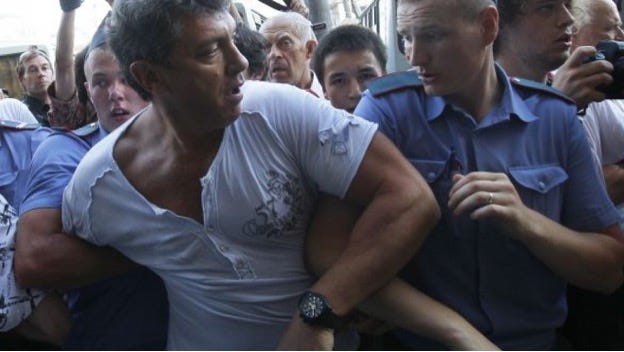
Seeing American soldiers and police in special military uniforms in Los Angeles reminded me a lot of Putin’s Russia. Seeing Senator Padilla handcuffed yesterday also reminded me of how Putin used to arrest opposition politicians, until they were eventually killed (like Boris Nemtsov, pictured above during one of his multiple arrests, and Alexei Navalny), imprisoned, or forced into exile. Of course, we are far from replicating such autocratic practices in the United States. But so too was Russia at the beginning of Putin’s first term, and even the beginning of his second term. I hope they do not play out in the same way.
Putin also portrayed demonstrators as foreign agents, being paid by international enemies of Russia. When I was the U.S. ambassador to Russia, he blamed me personally for helping to foment revolution! I wrote about that history here. The Trump administration is making precisely the same claim about demonstrators in Los Angeles today. As Department of Homeland Security Assistant Secretary for Public Affairs Tricia McLaughlin asserted on June 11th,
“I think that there's major questions right now about who is financially backing these protests. There's some activity on the ground that it seems that is highly coordinated, and that there might be a financial backer that could be even a foreign adversary, and we are having ICE, or, excuse me, the IRS and the FBI, look further into who might be backing these protests.”
That’s right out of Putin’s playbook.
In 2004, Putin also used a crisis to undermine the power of regional governments. After a horrific terrorist attack against a school in Beslan, Russia, on the first day of school, September 1, 2004, Putin took advantage of a traumatized nation to abolish direct elections of governors. Unlike Russia in 2004, Trump is not taking advantage of a crisis in Los Angeles today; instead, he is inventing one, which then creates a pretext for him to usurp power from state authorities in California. Trump even hinted at the possibility of arresting Governor Gavin Newsom.
The parallels between Putin’s early years of eroding democracy and consolidating dictatorship and Trump’s aspiration and actions today are haunting. But there remain two differences that make me optimistic about the future. When Putin came to power, Russia had only experimented with democratic rule for several years. And those years in the 1990s were tough ones. The first years of democracy in Russia coincided with a period of profound and enduring economic depression that lasted nearly a decade (The same was true in Weimar Germany). That correlation between democracy and economic depression made Putin’s mission of resorting to dictatorship easier.
By contrast, Americans have lived under democracy for many decades—some might say centuries. Second, Trump did not come to power during a major economic depression. Just the opposite. Trump and his loyalists may think they have a mandate to carry out a revolution. While he was still in Trump’s orbit, that is precisely what Musk asserted: this moment “won’t be business as usual. This is going to be a revolution." But the American people did not vote Trump back into office because they desired revolutionary change (and half of the voters, of course, voted against him). They were more focused on matters like lowering the price of eggs.
Consequently, America’s capacity for defending democracy today is much greater than Russia’s in the 2000s. The courts have been the first line of defense. They did not play such a role in Putin’s Russia. Civic mobilization is also working. The protests at Tesla stores played a direct and consequential role in compelling Musk to return to his business life, thereby slowing the damage he was doing to democratic practices as a government employee. On Saturday, hundreds of thousands of Americans will assemble and speak freely in hundreds of cities around the country in a protest called “No Kings.” That cannot happen in Putin’s Russia today. And most importantly, congressional elections will occur next year.
Trump may want to emulate Putin. However, most Americans will not support such a rule in the United States.

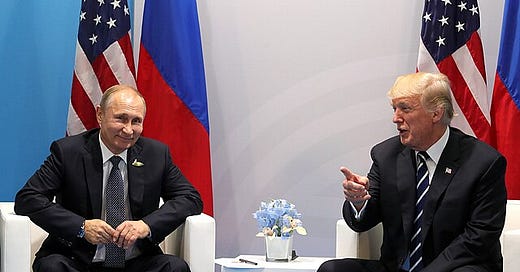


The author points out two noteworthy aspects: first, the U.S. courts have served as the first line of defense, with 95% of Trump's lawsuits being dismissed; second, Trump came to power during a time when the U.S. economy was not in a state of collapse. By contrast, Russia’s democratic institutions in the 1990s were quickly devoured by Putin, partly due to the country's economic breakdown. As for the analysis of their personalities, the author’s observations are, in my view, quite incisive.Thank you for your great piece.
Interesting ... the only positive thing that I can say about Putin is that he likes tigers -- my spirit animal, who unlike lions, is solitary by nature.
Regarding autocrats and autocratic powers, I'm reminded of a passage in Robert Massie's biography of Catherine the Great. In it, he recounts a conversation between V.S. Popov, an aide to Potemkin, and young Tsar Alexander I:
"The subject was the unlimited power with which the great Catherine ruled her empire. ... I spoke of the surprise I felt at the blind obedience with which her will was fulfilled everywhere, of the eagerness and zeal which all tried to please her."
""It is not as easy as you think," she [Catherine] replied. "In the first place, my orders would not be carried out unless they were the kind of orders which could be carried out. You know what prudence and circumspection I act in promulgation of my laws. I take advice, I consult the enlightened part of the people, and in this way I find out what sort of effect my laws will have. And when I am already convinced in advance of good approval, then I issue my orders, and have the pleasure of observing what you call blind obedience. That is the foundation of unlimited power. But, believe me, they will not obey blindly when orders are not adapted to the opinion of the people."" (572-573).
"Her wielding of absolute power rested on her sensitivities to the nuances of the possible." (572)
OTOH, "It would not be impossible to prove with sufficient repetition and a psychological understanding of the people concerned that a square is in fact a circle." Joseph Goebbels
Something to think about ...